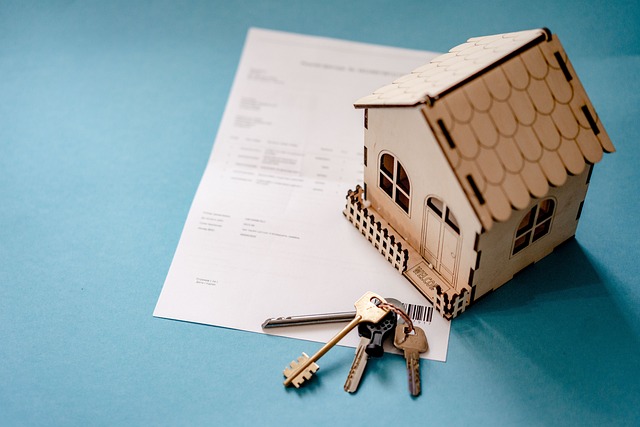Property insurance protects individuals and businesses from unforeseen events impacting real estate assets through a contract with insurers who agree to compensate for damage or loss in exchange for premiums. Coverage includes risks like fire, theft, vandalism, and natural disasters, with policy types influencing premium rates based on location, property value, and risk assessment. Understanding coverage options, exclusions, and comparing quotes from multiple insurers is crucial for finding affordable protection that meets individual needs, offering financial stability and peace of mind. Regular policy reviews and updates ensure continued affordability as circumstances change. Property insurance has proven beneficial in various contexts, aiding farmers and urban complexes with tailored coverage, contributing to community financial stability.
Looking to protect your investment without breaking the bank? Discover the power of affordable property insurance. This essential guide covers everything you need to know, from property insurance basics to common coverage options and how to secure the best rates. Learn about maintenance tips for keeping costs low over time and explore real-world examples of successful affordability. By understanding these key aspects of property insurance, you can safeguard your assets effectively and efficiently.
Understanding Property Insurance Basics

Property insurance is a safety net that protects individuals and businesses from financial losses due to unforeseen events affecting their real estate assets. It’s a contract between the policyholder and an insurance company, where the latter agrees to compensate for property damage or loss in exchange for regular premiums. This protection encompasses various risks, including fire, theft, vandalism, natural disasters, and more, ensuring that the insured can rebuild, replace, or repair their property.
Understanding property insurance basics is crucial when considering affordable options. Policies typically include different coverage types, such as dwelling coverage for homes, rental units, or businesses, and contents coverage for personal belongings inside these structures. Knowing what’s covered and what’s not is essential in making informed decisions. Additionally, factors like location, property value, and risk assessment influence premium rates, allowing potential policyholders to explore affordable options by comparing quotes from various insurers based on their specific needs and circumstances.
Why Affordable Property Insurance Matters

In today’s economic climate, where every cent counts, affordable property insurance stands as a lifeline for individuals and businesses alike. It offers protection against unforeseen events that could leave one’s most valuable assets vulnerable—their home or place of business. Property insurance is not just about safeguarding physical structures; it’s about ensuring financial stability and peace of mind in the face of adversity.
When you opt for affordable property insurance, you’re making a strategic decision to mitigate risks without breaking the bank. This type of insurance provides coverage for damage or loss due to various perils such as fire, theft, natural disasters, and more. By investing in adequate protection at an affordable rate, policyholders can avoid hefty out-of-pocket expenses during emergency situations, allowing them to rebuild and recover swiftly.
Common Coverage Options and Exclusions

When considering Property Insurance, understanding common coverage options and exclusions is vital. Policies typically cover a wide range of perils, including fire, lightning, wind, and hail damage, as well as theft and vandalism. They also often include liability protection, which shields against claims for injuries or property damage you may cause to others. This basic coverage serves as a strong foundation for protecting your investment.
However, it’s crucial to be aware of exclusions, as these are circumstances that aren’t covered under the policy. Common exclusions include flood damage (usually requiring separate insurance), earthquake damage, and intentional acts like arson or vandalism. Additionally, certain high-value items may require specific coverage, such as jewelry or valuable artworks, which could be excluded from standard policies. Always review your policy carefully to ensure it aligns with your needs and covers potential risks.
How to Get the Best Rates on Property Insurance

To secure the best rates on property insurance, compare quotes from multiple insurers. Online platforms and comparison tools make this process efficient by gathering data from various companies simultaneously. Take time to review each quote thoroughly, examining not just the price but also the policy details and coverage limits. Understanding what’s included and excluded is vital for ensuring adequate protection.
Additionally, consider your property’s unique characteristics. Factors like location, construction materials, age, and security measures influence premiums. High-risk areas or properties with special features might require tailored policies, impacting rates. Regularly reviewing and updating your policy as your circumstances change can also help maintain competitive pricing on your Property Insurance.
Tips for Maintaining an Affordable Policy Over Time

To maintain an affordable property insurance policy over time, regular review is key. Assess your coverage needs at least once a year to ensure they align with your current situation and assets. Update your policy to reflect any changes in your home’s value, addition of valuable items like jewelry or electronics, or significant life events such as marriage or having children. This proactive approach can help prevent unexpected spikes in premiums.
Additionally, consider the deductibles associated with your policy. Increasing deductibles can significantly lower monthly costs, but it’s crucial to balance this against the financial burden of higher out-of-pocket expenses in case of a claim. Shop around for competitive rates from various insurers to find the best value. Comparing quotes allows you to identify policies that offer comprehensive coverage at affordable prices, ensuring you get the most protection for your investment without breaking the bank.
Real-World Examples of Affordable Property Insurance Success

In real-world scenarios, affordable property insurance has proven to be a game-changer for many homeowners and businesses alike. Take, for instance, the case of small-scale farmers in rural areas who, with the help of tailored property insurance policies, have been able to safeguard their crops and livestock against unforeseen natural calamities. These policies, often coupled with government subsidies, offer coverage at rates that are both manageable and commensurate with the insured’s financial capabilities.
Another successful implementation can be observed in urban settings where high-rise apartment complexes have adopted affordable property insurance models. By pooling resources and risks, these buildings significantly reduce their overall insurance premiums while ensuring comprehensive protection against fire, theft, and other common hazards. This approach not only benefits individual residents with lower costs but also contributes to the financial stability of the entire community.
